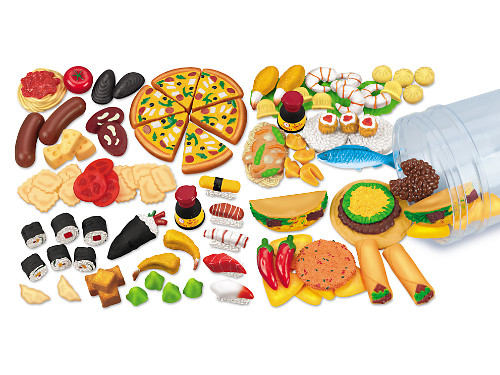
BOOK SUMMARY
My Food, Your Food, Our Food by Emma Carlson Berne is a great resource for teachers to introduce cultural differences to preschool-age children. The book presents several different cultures exploring how people eat, their utensils, and the ingredients needed to make meals.
BOOK EVALUATION
One unique component of this book includes music that goes with the story. Additionally, the detailed illustrations enhance the simple wording of the book while introducing images of traditional cuisines from diverse cultures. These drawings help children grasp the book's content in a purposeful and meaningful way. This strategy is beneficial for young learners as they are introduced to new terms and ideas. The language is carefully selected with appropriate terminology to support nursery-age children's development. My Food, Your Food, Our Food does not focus on one single culture; yet, it highlights how everyone needs food to fuel our bodies and keep them strong. Because of this realistic portrait of a community, well-defined details, and strong characterization, My Food, Your Food, Our Food is considered a great book for preschool-age children.
MOTIVATIONAL ACTIVITIES:
1. DRAMATIC PLAY PROPS- Teachers can include multicultural food and various menus in the dramatic play area to promote diversity and inclusion. Children can explore new foods in a hands on and natural way. This multicultural play food assortment can be purchased here from Lakeshore Learning.
2. MOLDING CLAY- The students can explore play dough, molding the dough to form food or dishes the children have at home. The teacher should discuss different foods with the children prior to this activity and provide photos to scaffold their experience.

READER RESPONSE QUESTIONS:
1. Tell me about a time when you ate outside?
2. Have you ever eaten food with something other than a fork?
3. What is a food you like to eat with your family?
4. What food from the book would you like to try and why?
SIMILAR BOOKS BY OTHER AUTHORS:
1. Fry Bread: A Native American Family Story by Kevin Noble Maillard
2. Ada Twist, Scientist by Andrea Beaty
3. Same, Same But Different by Jenny Sue Kostecki-Shaw
4. Your Name is a Song by Jamilah Thompkins-Bigelow
References
Beaty, A. (2018). Ada twist, scientist. National Braille Press.
Berne, E. C. (2019). My Food, your food, our food. Cantata Learning.
Galda, L., Liang, L. A., & Cullinan, B. E. (2017). Literature and the child. Cengage Learning.
Kostecki-Shaw, J. S. (2011). Same, Same But Different.
Maillard, K. N. (2019). Fry Bread: A native american family story. Roaring Brook Press.
Thompkins-Bigelow, J. (2021). Your name is a song. Library Ideas, LLC.

Comments
Post a Comment